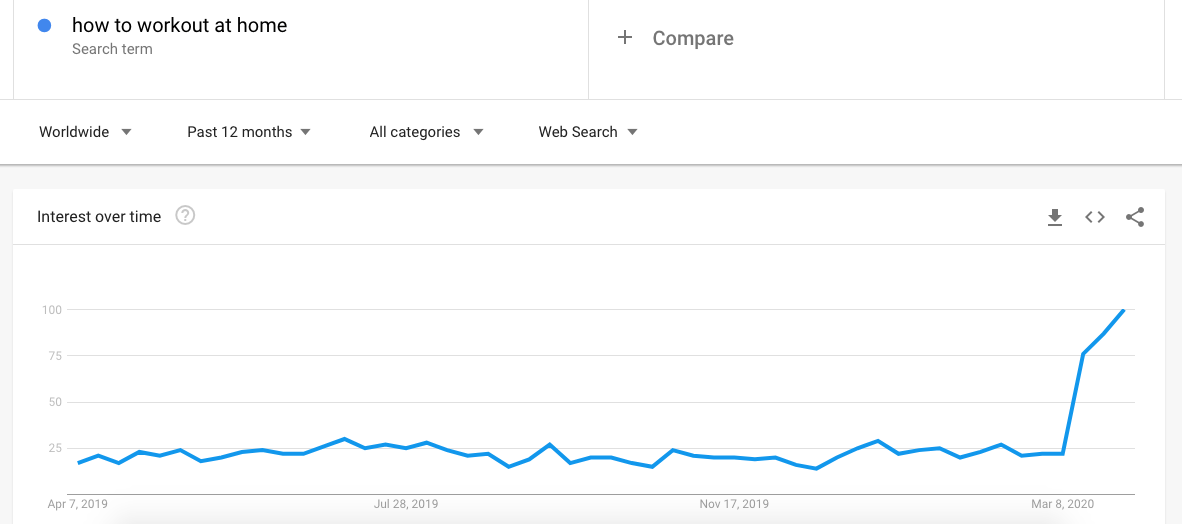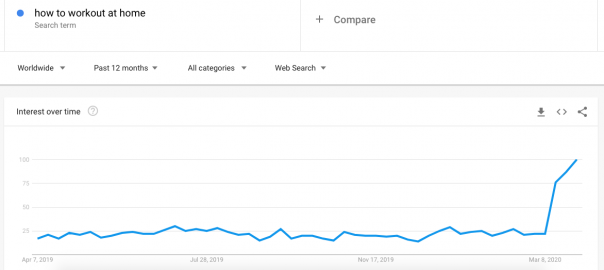The last few weeks have turned the world on its head. You may be working from home. Or social distancing with your family or roommates, working on solutions for your business. You might have had to make really hard decisions lately. You may be feeling uneasy or stressed, or lost. In recent weeks, many governments have announced that all non-essential businesses must close. This is heartbreaking for many local business owners, despite the obvious necessity of this measure from a public health perspective. Many businesses had already closed earlier in March to prevent the spread of the virus and to protect their employees and customers.
By now, you’re familiar with if not exhausted by the consequences of this global pandemic. Instead of dwelling on the pain, sacrifice, and uncertainty, let’s dive into how we can use this time to transform your business and find opportunity in the fog. Today, we will discuss what exactly you can do to take your operations online, introduce essential tools, and offer advice on staying sane and keeping your business afloat.
Move Your Business Online
E-Commerce
If you sold physical items out of your store, the first step to all of this is ensuring you have e-commerce set up. This can be in the form of a Shopify store, or WooCommerce if you have a WordPress site, or get set up on a marketplace like Facebook Marketplace, Kijiji, or Etsy. Having a little bit more time on your hands can be helpful with writing product descriptions or doing product photography. As everybody is home, online shopping will only increase. If you were providing a service in person, such as yoga classes at a studio, run online classes through Zoom or even Instagram Live. Promote on social media to gain visibility. For artists, this can include online masterclasses or webinars. For other small businesses, you can provide consultations and share your expertise virtually (for example, interior design). Remember that some people might be struggling with funds so if you are providing online classes, consider doing a donation-based practice. If you are using PayPal, Venmo, or other money-transfer applications, make sure to read any fine print to see what percentage of your income is taken.
Keep in mind: while everybody is turning to e-commerce, be mindful of supply chain disruptions and changes in demand. If you are producing a physical product, get in touch with your suppliers and see if they need support or if you might have to change course.
Your Website
Speaking of your website, when people go to find you, how does your site hold up? Is it user-friendly? Does it work on mobile? Mobile browsing is very likely to spike as people are home and spending more time on their phones. Easy to navigate with intuitive pages and easy-to-find information? Other things to consider: test your contact page forms to ensure your funnel works and you are receiving requests for information; ensure there is sufficient content on all the pages to provide the necessary information and convince the user; double-check responsiveness and friendliness of the site on mobile. Test, test, test. If you were a user, where would you click? What information would you need? If you have extra time, consider writing additional content, supplementing the “About Us” page, or even expanding the portfolio collection of product or service photographs.
SEO
Speaking of user experience and testing, is your SEO properly set up for your website and e-commerce aspects? This is a good time to go through your Google Search Console and Google Analytics to see what customers search for when they find your website, and how your website is performing. It is important to keep in mind that not all numbers will be 100% accurate. If your employees are working remotely and accessing your site, your analytics data may be skewed. Get your employees to share their home IP addresses and use those to set up a filter in Google Analytics to avoid counting their visits as sessions to the website for more accurate reporting. Search demand has also decreased as people are going out less and are more conservative with their dollars. The rankings, however, have stayed the same, according to Search Engine Land, so it is imperative to continue working on your SEO campaign. Growing your organic SEO efforts and maintaining your rankings will set you up for success once we recover from this pandemic. Use this time wisely to move your business forward. You can also play around with Google Trends, and test the topics you are curious about for interest over time. Here we can see that many more people are now searching for workouts at home.

Social Media
Another key aspect of your online presence that customers WILL search for and look at is your social media. Depending on your industry, ensure your Google My Business listing is set up (key: correct hours and information in relation to COVID-19-related closures). Here is a good resource outlining recent GMB changes. Don’t forget Facebook, Instagram, Twitter, LinkedIn pages. People are spending way more time on social media now and it’s the perfect time to put your information in front of them. In regards to paid social ads, you can get higher reach on your sponsored posts than usual since more people are on their devices. Fewer people are advertising now so you can get a great reach at a lower cost too. Not sure what to post since you are stuck at home? Consider featuring personal stories or even highlighting the different team members of your business to create personable content. The founder of the company can post as well, welcoming discussions of challenges and building a community. Now is the time to educate and help solve problems.
Communications
If you had to close your retail location, and need to communicate that to your client base via email, make sure the information you are about to send out is fully correct and useful. This is a great article outlining how to stay considerate, yet effective with your communications. Focus on letting your customers know how you are supporting your employees and being transparent. It also shows that you are encouraging social distancing and doing your part in all of this. By communicating what’s going on with your business and employees, you are creating trust with your customers and helping them continue to support you by providing them with the necessary information. Empathic communications that are authentic and truthful will hit home for your customers as opposed to tone-deaf “Use COVID-19 as your promo code at checkout” solutions.
If you are thinking of reducing your digital marketing efforts during this difficult time as a way to cut costs – consider investing in it instead. You can reach a large number of people and improve your online presence at a time when it matters most. Here is another very useful resource for your consideration: “Reducing digital marketing due to COVID-19? Read this first” article from SearchEngineLand.
We hope this has been valuable to you and we are here if you need anything!
Business & Finance Articles on Business 2 Community
(25)
Report Post






